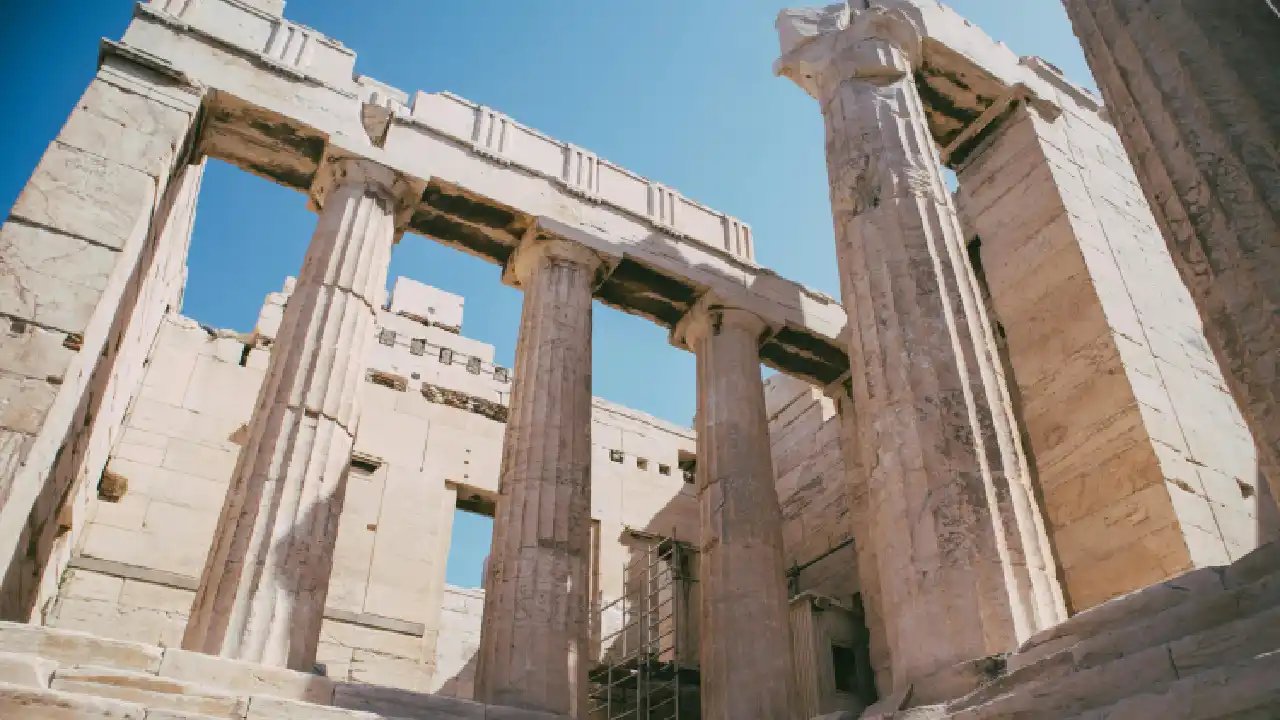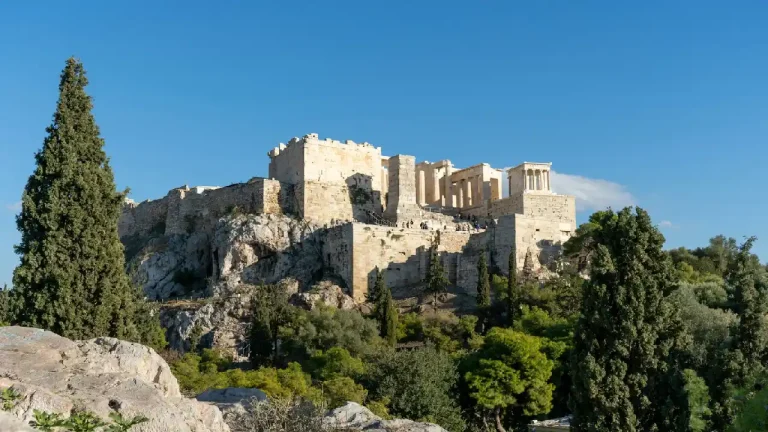Propylaea Athens: 5 Fascinating Facts Revealed
Introduction
Nestled atop the Acropolis of Athens, the Propylaea stands as a monumental gateway to the sacred complex of temples, most notably the Parthenon. Its construction in the 5th century BCE under Pericles’ golden age was no mere decorative entrance—it symbolized the glory, wealth, and cultural sophistication of ancient Athens. Despite centuries of war, weathering, and repurposing, the Propylaea Athens continues to awe historians, architects, and visitors with its grandeur and precision.
This article delves into the design, purpose, and historical relevance of the Propylaea, capturing its essence as both an architectural triumph and a powerful statement of Athenian identity.
The Architectural Genius of Propylaea Athens
The Propylaea, designed by the architect Mnesicles, reflects the quintessential features of Classical Greek architecture: symmetry, harmony, and proportion. Constructed between 437 and 432 BCE, it was envisioned as a colossal entrance structure that harmonized functionality with visual magnificence.
Layout and Materials
- Pentelic marble and limestone were chosen for construction, emphasizing both durability and brilliance.
- The Propylaea features a central hall flanked by two wings, a unique layout that breaks from rigid architectural norms of the time.
- The Doric and Ionic orders coexisted gracefully: Doric columns adorned the exterior, while Ionic columns enhanced the interior, blending strength and elegance.
This blend of orders signaled an evolving aesthetic philosophy in Greek architecture and a sophisticated understanding of form and purpose.
Engineering Marvel
Despite its age, the precision in stone-cutting and column placement rivals modern-day engineering:
- Column drums were so finely carved that they required no mortar.
- The alignment, even after centuries, remains remarkably consistent—an enduring testament to ancient Greek craftsmanship.
Historical Context: Built Amidst Conflict and Glory
The Propylaea wasn’t just a gateway—it was a statement of power and pride. Athens, following its victory in the Persian Wars, rose as a dominant force in the Delian League. Pericles, the Athenian statesman, sought to immortalize this power through architecture.
The Propylaea marked the entrance to the Acropolis—home to temples, altars, and treasures. Its grandeur set the tone for worship and celebration, as well as for displaying Athenian dominance and prosperity.
Yet, its construction halted abruptly in 432 BCE, possibly due to the Peloponnesian War. Thus, while majestic, the structure remains incomplete, a poignant reminder of Athens’ volatile political climate.
Symbolism and Cultural Significance
More Than a Monument
The Propylaea symbolized more than architectural excellence. It served as:
- A boundary between the sacred and the profane, transitioning visitors from the mortal city to the divine precinct of the gods.
- A cultural filter, separating daily Athenian life from religious reverence.
Political Messaging
Every element of the Propylaea communicated Athenian democracy, power, and refinement:
- The sheer scale and opulence emphasized the city’s wealth.
- The strategic blend of Doric and Ionic orders hinted at a unified yet diverse polis, embracing tradition while advancing innovation.
The Propylaea Through the Ages
Time has been both kind and cruel to the Propylaea.
Byzantine and Ottoman Periods
During the Byzantine era, parts of the Propylaea were repurposed into Christian structures. Later, the Ottomans transformed sections into administrative buildings and even barracks.
Despite such transitions, core elements of the Propylaea endured, revealing how its robust design could outlast multiple empires and cultural shifts.
Modern Restoration
Since the 19th century, archaeological efforts have aimed to restore and preserve the Propylaea. Today, it continues to receive careful attention from conservators and historians, ensuring that future generations witness its splendor.
Why Visit the Propylaea Today?
Visitors to Athens often seek the Parthenon, but the Propylaea offers the first glimpse of Athenian greatness. As you walk through its columns, you’re not merely entering a site—you’re stepping through time.
You’ll witness:
- The subtle slope of the Acropolis accommodating architectural alignment.
- The interplay of sunlight on marble, revealing ancient techniques of shadow and form.
- The deliberate pathway that readies the soul for the sanctity beyond.
FAQs
What is the Propylaea in Athens?
It’s the monumental entrance to the Acropolis, built during the 5th century BCE under Pericles’ direction to serve both religious and ceremonial functions.
Who designed the Propylaea?
The Propylaea was designed by the Athenian architect Mnesicles, known for blending functionality with aesthetic brilliance.
Why is the Propylaea important?
It marks the transition from the secular city to the sacred Acropolis and showcases the architectural and cultural zenith of ancient Athens.
What materials were used to build the Propylaea?
Primarily Pentelic marble and local limestone, chosen for their strength and visual appeal.
Was the Propylaea ever completed?
No, construction stopped due to the outbreak of the Peloponnesian War, leaving parts of the original design unfinished.
Can you visit the Propylaea today?
Yes, it remains a key part of the Acropolis and is accessible to visitors, offering a powerful introduction to the ancient citadel.
Conclusion
The Propylaea Athens is more than stone and columns. It’s a threshold—one that invites us to understand the aspirations, artistry, and enduring legacy of ancient Greece. It speaks of a society that believed in beauty, worship, and civic pride, and it continues to inspire architects and historians around the world.
So, the next time you visit the Acropolis, take a moment at the Propylaea. Let its scale humble you, its symmetry captivate you, and its history transport you.








